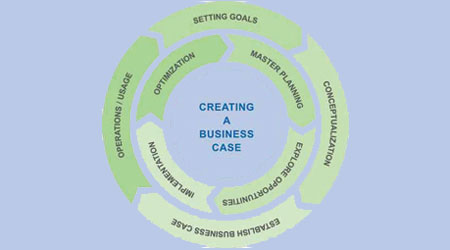Making The Business Case For Smart Buildings
Part 1 of a 2-part story on how data, BAS, and master planning all combine to create smart buildings.
In the past decade, facility managers have witnessed dramatic development and maturation in building systems, smart technologies, and the ability to collect, analyze, and share data across the building infrastructure. The building automation system (BAS) has long been the center point of logic and control in building operations, and can be very effective in optimizing HVAC, lighting, and other energy-consuming systems. But the facility world is changing, and to capture the true opportunities of building intelligence, it is necessary for facility managers to think beyond the BAS as the future engine of intelligence and optimization.
Rapidly advancing building systems, sensor technologies, the Internet of Things, data availability, and cloud computing and analytics, along with mobile communications, have created countless possibilities, opportunities, and also potential traps for facility managers. Developing a business case to justify an intelligent building strategy begins with understanding the opportunities and possibilities, identification of desired outcomes, engaging multiple stakeholders, master planning, and the development of an implementation roadmap.
There are dozens of ways the intelligent building can be defined, and depending on the source, there will likely be an agenda and vendor bias in the definition. When seeking to build an intelligent building, facility managers and other key decision-makers must weigh their options carefully to make decisions that best support the business case both in the near term and future.
Open Is Best
The best and most future-ready solutions are based on open-source, open-protocol platforms. This approach allows interoperability on a common converged network where middleware and analytics dynamically connect the building smart systems to provide continuous and real-time data sharing. This is very different from most existing buildings today that are made up of disparate and proprietary systems that don’t communicate.
Here’s a modern definition of an intelligent building: A truly intelligent building is informative, predictive, responsive, adaptive, diagnostic, corrective, and self-healing. It will understand and respond to occupancy and activities and provide information and personal awareness that will drive and change behavioral responses. In doing so, it will create asset value and competitive advantage through continuous improvement and enhanced experiential satisfaction.
Data is the new natural resource of the built environment. When mined through a converged intelligent building platform with an applied layer of middleware and analytics, countless new opportunities and outcomes can be created.
Effectively developing an intelligent building is a well-planned strategic journey that is most commonly executed in phases over time. The roadmap identifies and provides logic for understanding what is fit for implementation today to achieve an initial return on investment while positioning the building for the future of evolving technologies. Carefully considering the benefits and long-term implications of strategic choices is imperative to best position the building, campus, or portfolio for an enabled future.
There are several key components in developing a strong business case and roadmap to building intelligence. Intelligent building consultants with deep knowledge of building systems and technologies should be considered to lead the process and implementation. The roadmap is a circular process that begins with the end in mind. Only after the goals are set should a facility manager begin to decide what kind of integration is required and what kinds of features and functions are most important from the subsystems. Without a clear destination in mind, a facility manager risks running down dead ends, taking expensive circuitous routes, failing to achieve outcomes, and landing in the wrong place with potentially obsolete and proprietary system limitations.
Master planning is the first phase of the process where stakeholders’ goals and desired outcomes and guidelines are identified. At this time, it is critical to establish guidelines. Defining rules of engagement, the decision process, and priorities up front can significantly enhance and streamline the process.
Bringing together the wide range of stakeholders early in the process helps to align often-conflicting agendas. By including and understanding stakeholders’ specific interests early, it is much easier to establish common goals and outcomes as well as mutually overcome any roadblocks. Typical stakeholders on an intelligent building team include: the owner, end user, facilities and operations, technology, security, finance, compliance, sustainability, and the building’s engineer.
Related Topics:










